Plantations hold incredible history! This one is no exception. In fact, Laura Plantation may be one of my favorite tours just for how in depth they are with their history. There’s not one story told here, but many. Those that lived in the house, and many stories from those that did not. Stories from those with money and success and stories from the enslaved and their hardships.
It’s not your typical plantation home either. There is no huge mansion with white columns surrounding it. It’s a colorful home full of Creole culture.
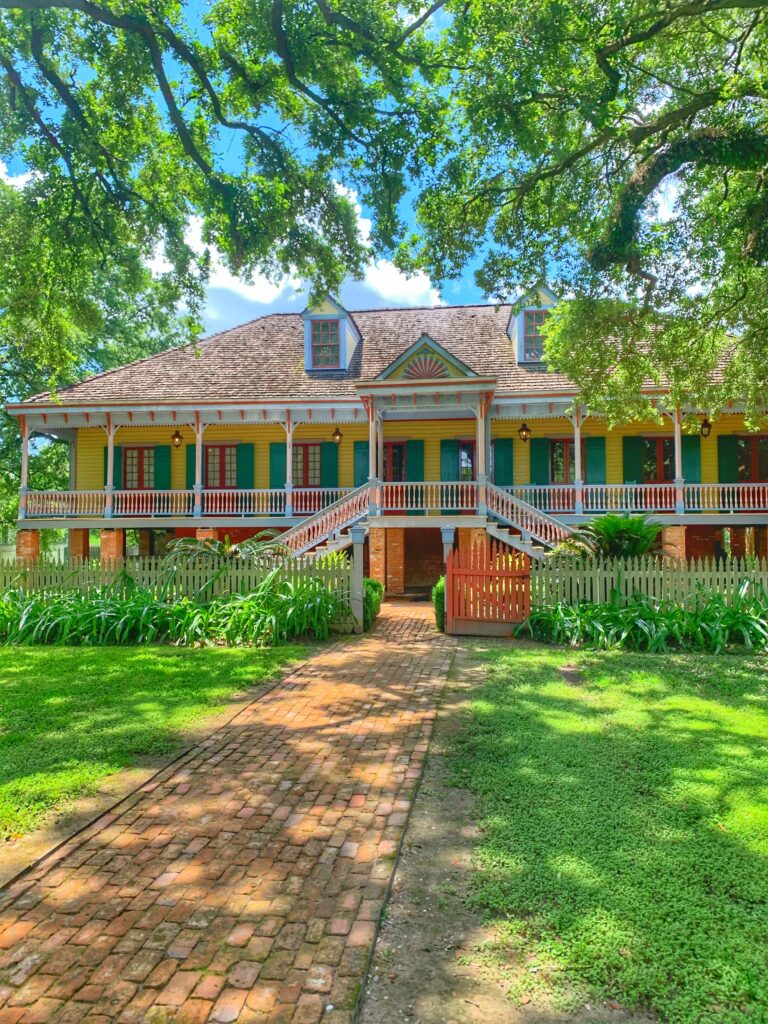
History of Laura Plantation
Guillaume Duparc acquired the land in 1804. It took 11 months to build the house. During the tour, they show how the structure of the house was built. The enslaved Africans basically built each piece separately and then put it together like a puzzle. At one point the property was 12,000 acres (mostly in cypress forest)! That’s still a lot of sugarcane!
After his death in 1808, Duparc’s wife, Nanette Prud’homme took over the farm and would be the first of four generations of women to run the plantation. The land was eventually handed down to Laura Locoul, the great granddaughter of Nanette. She sold it off in 1892.


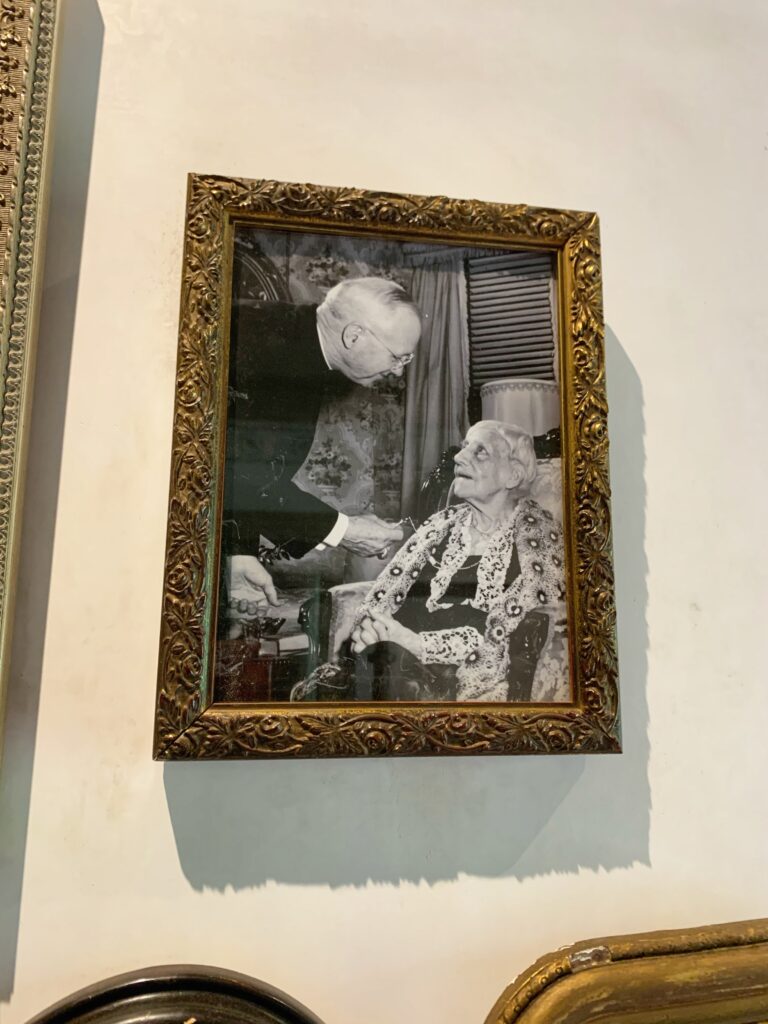
Fun little fact, Laura was born during Lincoln’s presidency and died during Kennedy’s.
Slavery at Laura Plantation
Laura Plantation started with 17 slaves and would eventually grow to have 186 at the start of the Civil War. In 1830, Laura’s grandmother bought 30 teenage girls to have them impregnated and produce more slaves. More than 400 slaves were born or purchased, lived and died on this farm.
65 slave cabins were built to house them. Each cabin was split in two and each side would hold a family of two to eight people. One room for up to eight people! During the tour, you will get to go inside one of the slave houses that are on the property. Those slave houses were occupied until 1977!
Unfortunately the Civil War did not exactly change their way of life. No longer enslaved, but they still did not have many options. This was the only life they knew. They had no education, could not read or write, and many of them did not speak English (they spoke Creole). The owners would now offer payment once a year. However they would no longer get free housing or food and would end up owing more at the end of the year than what they made.
Touring the Plantation
Laura Plantation is open daily except for New Years Day, Mardi Gras Tuesday, Easter, Thanksgiving and Christmas.
Tours run every 40 minutes starting at 10:00 AM. The last tour of the day begins at 3:20 PM.
It’s a guided 75-80 minute tour of the Big House, the property and gardens and the slave quarters.
The tour meets right outside the gift shop and will start with the Big House. They take you into the basement which is actually ground level before heading upstairs. During the tour, the guide will point out pieces that are original to the house.
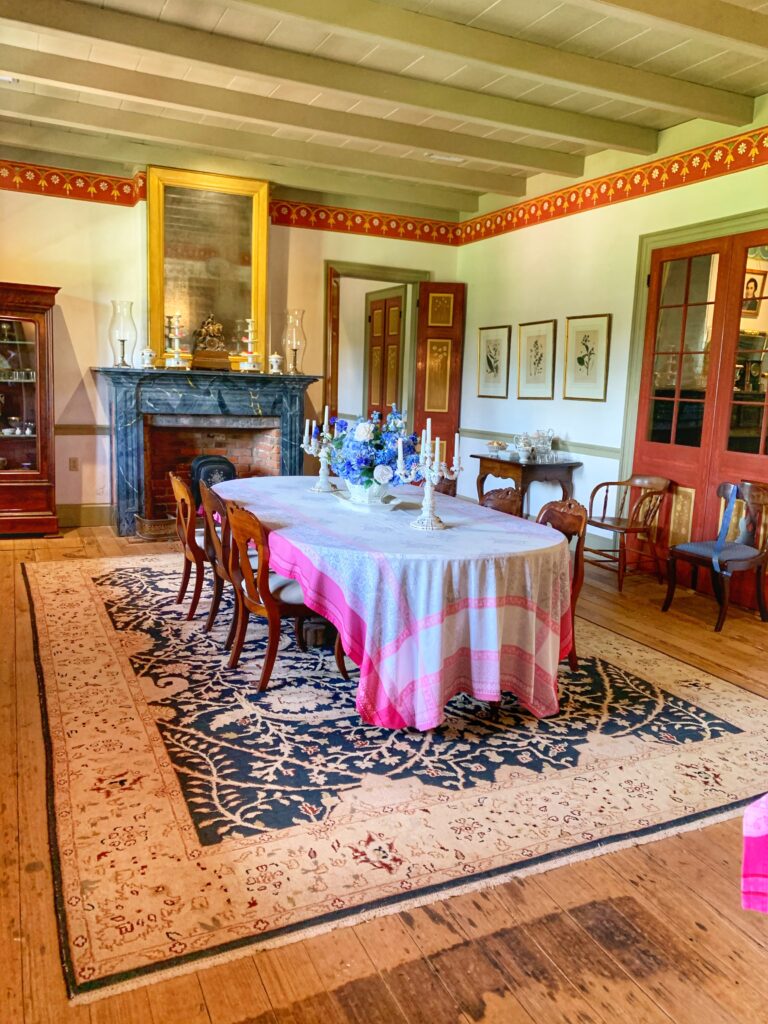
I heard many stories of the family that lived here. Cousins marrying cousins, trying to cure acne with arsenic, brutal slave owners and more.

The outside part of the tour will lead you past where the kitchen was, through the gardens and past historic buildings. The have an exhibit that has documents of how much the slaves were worth.
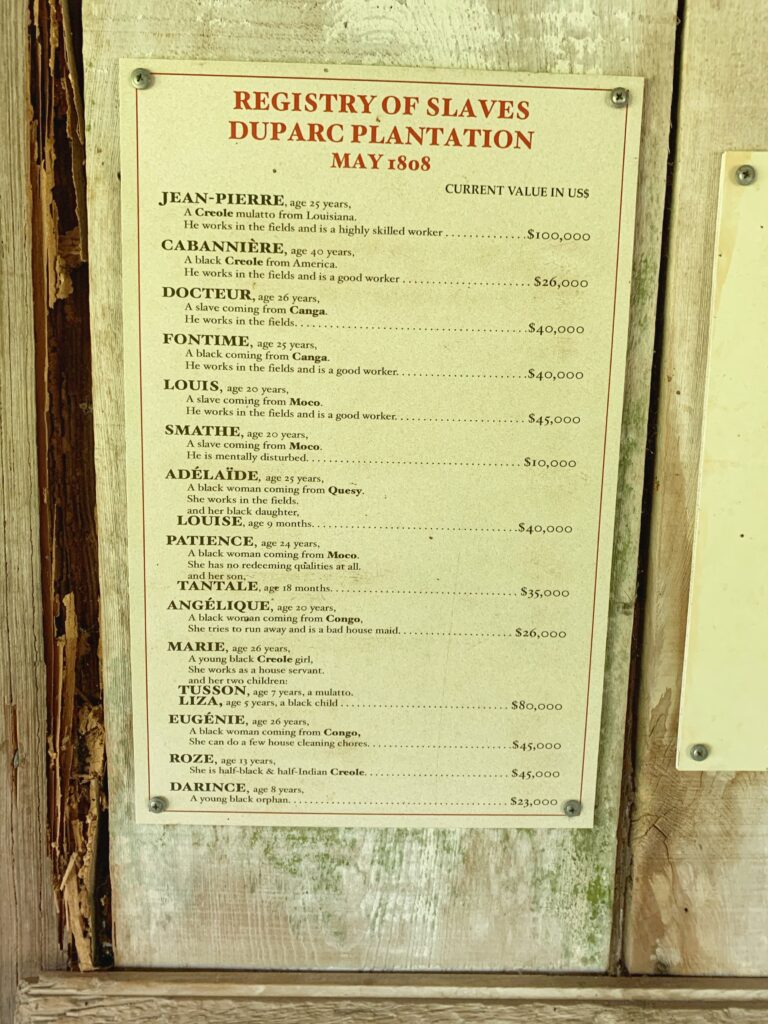
It also shows the family tree of a prominent family member with two slaves. He had four children that were born into slavery.
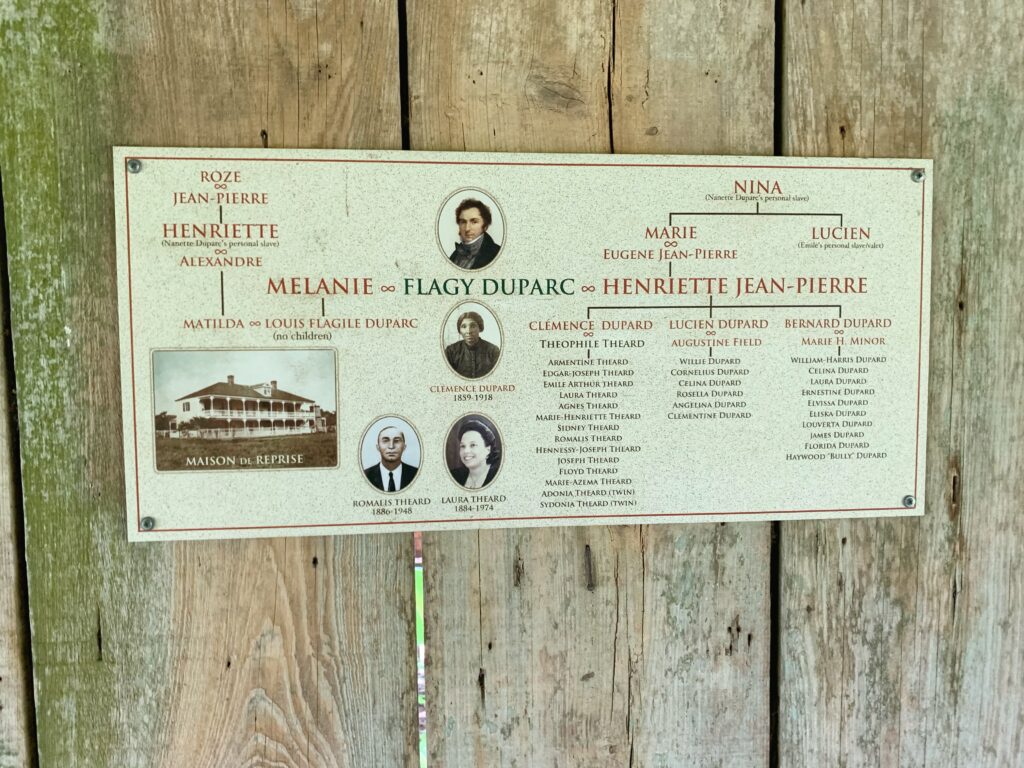
The tour will allow you to enter one of the slaves houses still on the property. We heard more stories of some of the enslaved and the conditions they had to work and live in.
Check out the exhibit on slavery near the restrooms before or after the house tour. “From the Big House to Quarters: Slavery on Laura Plantation” goes into more detail on the slaves that lived on Laura Plantation.
Tips for Visiting Laura Plantation
- Wear comfortable shoes. You will be walking or standing for 75 minutes.
- Bring water! It’s HOT!
- Photography is allowed, but no video.
- Use the bathroom before the tour starts. I don’t recall seeing any during the tour.
- They offer the tour in both English and French.
- Make sure to buy your tickets online HERE.
I highly recommend taking a plantation tour. There is so much history we can learn from. Even the way they built the house is fascinating! Laura Plantation does a great job of telling the stories of the owners and the enslaved.

Read these posts to check out more plantations in the area:
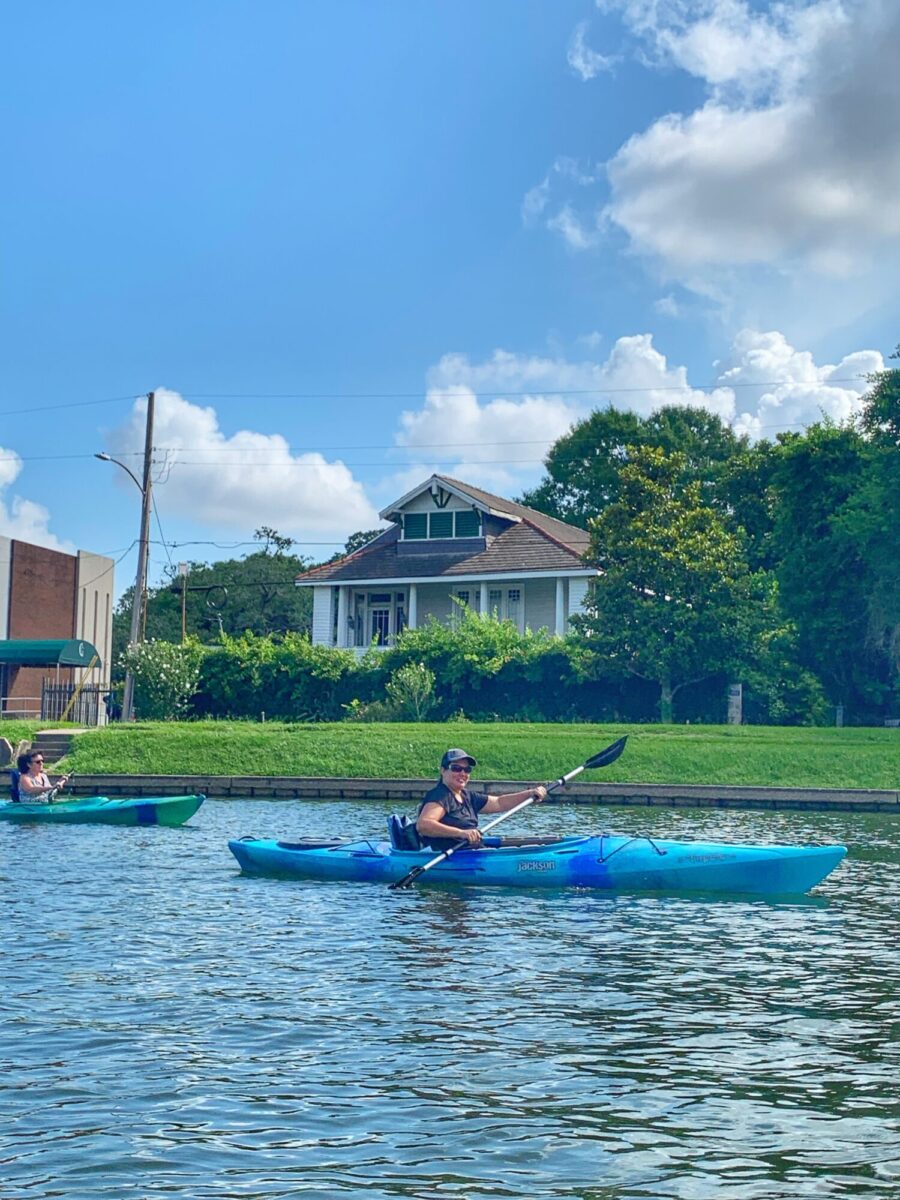
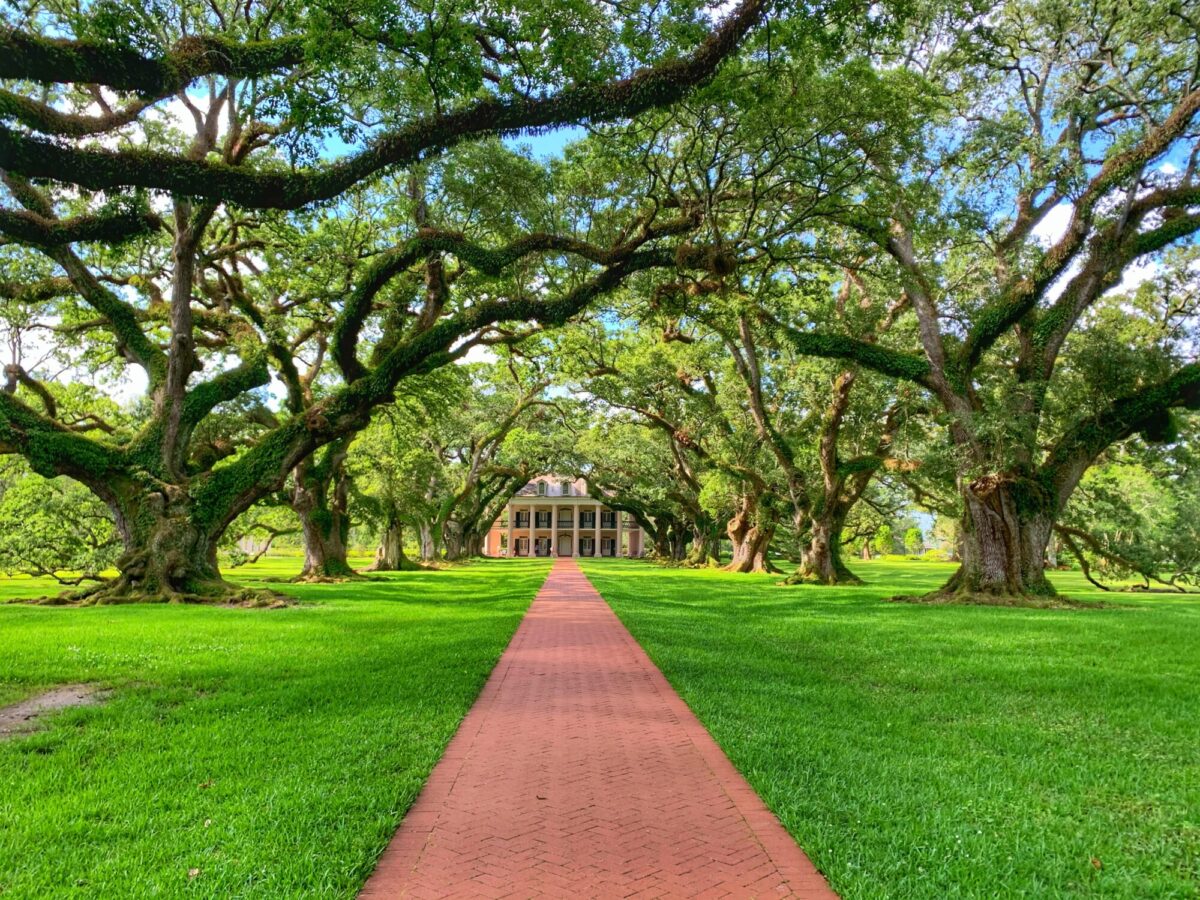


[…] Louisana The […]
[…] A Visit to Laura Plantation […]
[…] Laura Plantation is a Creole Heritage site on a sugarcane plantation. This tour dives into the harsh realities of slavery even more. Check out this post on the Laura Plantation for more info. […]